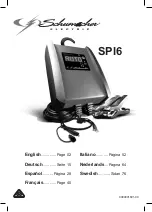
Safe Driving
Aquaplaning:
Depending on the depth of the water
layer on the road, aquaplaning may
occur, even at low speeds. Avoid
tra ck grooves in the road and apply
brakes cautiously in the rain.
Tire friction:
A given speed at which a vehicle
driven on dry roads can still be fully
controlled m ust be reduced when the
same vehicle is to be driven safely on
a wet or icy road.
You should pay particular attention to
the condition of the road as soon as
the prevailing tem peratures fall close
to the freezing point.
If ice has form ed on the road tire
traction will be substantially reduced.
Under such weather conditions, drive,
steer and brake particularly carefully.
We recom mend M + S radial-ply tires
fo r the cold season. On packed snow,
they can reduce your stopping d is t
ance as com pared with sum m er tires.
Stopping distance, however, is never
theless considerably greater than
when the road is w et or dry.
Brakes:
When driving down long and steep
declines, relieve the brakes by sh ift
ing into “ 3 " o r “ 2 ". This prevents
overheating of the brakes and
reduces brake pad wear.
A fte r hard braking it is advisable to
drive on fo r some tim e so the air
stream will cool down the brakes
faster.
When driving in heavy rain fo r some
time w ithout applying the brakes, the
firs t braking action may be som ewhat
reduced and increased pedal pres
sure may be necessary. For this
reason, stay fu rth e r away from vehicle
in front.
The condition of the parking brake
system is checked each time the car
is in the shop fo r maintenance.
Between maintenance checks it is a
good practice to apply the parking
brake once or tw ice while driving at
approxim ately 50 k m /h /3 0 mph on a
dry road. A pply brake lightly until a
slight drag on the wheels is felt. Keep
applying brakes fo r about 10 seconds
while pulling release handle out, then
release parking brake com pletely.
This practice will keep the parking
brake at maximum efficiency.
W arning:
The stop lamps will not com e on when
applying the parking brake only. Apply
parking brake only when road behind
vehicle is clear of traffic.
All checks and maintenance w ork on
the brake system should be carried
o u t by a MERCEDES-BENZ dealer.
If the parking brake is released and
the brake warning lamp in the
instrum ent cluster stays on, the brake
fluid level in the reservoir is too low.
Brake pad wear or a leak in the
system may be the reason fo r low
brake fluid in the reservoir.
Have the brake system inspected at a
MERCEDES-BENZ service station
w ith o u t delay.
Install only brake pads recom m ended
by us. If oth e r than recom m ended
brake pads are installed, the braking
properties of the vehicle can be
affected to an extent that the safety is
substantially impaired.
Содержание 1984 300SD
Страница 1: ...Owner sManual 300SD TURBO DIESEL Mercedes Benz...
Страница 3: ...Owner s Manual 300SD TURBO DIESEL Chassis 126 D 1984 Mercedes Benz...
Страница 4: ......
Страница 6: ......
Страница 10: ......
Страница 11: ...Vehicle Operation...
Страница 13: ...Instruments and Controls 11...
Страница 15: ...Instrument Cluster 13...
Страница 47: ...Driving 45...
Страница 60: ......
Страница 61: ...Vehicle Care 59...
Страница 66: ......
Страница 67: ...Practical Hints i 65...
Страница 84: ......
Страница 85: ...Technical Data Fuels Coolants Lubricants etc 4 83...
Страница 100: ...Daimler Benz AG Stuttgart Untertuerkheim Zentralkundendienst...
Страница 101: ......
















































